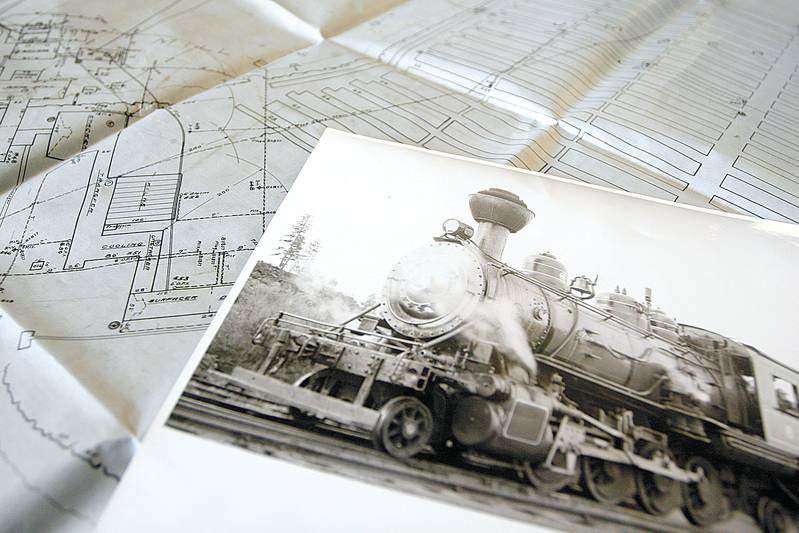Brooks-Scanlon collection tells tale of Bend’s mill past
Published 5:00 am Saturday, July 21, 2007

- A photo of Brooks-Scanlons engine No. 6 and a map of the companys lumber mill site are among the items in the Brooks-Scanlon collection, currently on loan to the Deschutes County Historical Society.
The Brooks-Scanlon Lumber Co. changed the face of Bend when it opened its sawmill on the east bank of the Deschutes River in 1916.
Along with the Shevlin-Hixon company on the opposite bank, the mill was the driving force behind Bend’s economy for decades. It produced millions of board-feet of lumber each year, employed hundreds of Bend families and helped spark the region’s first economic boom.
Trending
Now, a collection of documents, photos and other material from the company is on loan to the Deschutes County Historical Society and will eventually be available for researchers to consult in their exploration of the history of Bend, its mills, its people and its culture.
The Brooks-Scanlon collection has been in custody of the Oregon Historical Society since 1988, when the company donated it to the state organization.
Local researchers who wanted access to the information in the collection had to travel to Portland to see it, said Kelly Cannon-Miller, the executive director of the Des Chutes Historical Center.
But three years ago, historical society board members Susan Schneider and Ward Tonsfeldt started looking into borrowing the collection.
“There’s sort of a general trend nationwide to repatriate materials to the area they are from,” said Tonsfeldt, himself a historian. “There’s a sense that those kinds of documents are more meaningful to the area they’re from.”
Included in the 137-box collection are canceled stock certificates, photographs, maps, blueprints, personnel records, transaction records and ledger books dating to the mid-1800s.
Trending
Brooks-Scanlon was a Minnesota company that came west in the early 1900s to seek new timber resources. By 1915, the company had purchased vast tracts of timber in the woods around Bend. It tapped its timber holdings to supply raw ponderosa logs to its sawmill, built in 1916 on the current site of the Old Mill District.
Brooks-Scanlon’s transition
In 1950, Brooks-Scanlon bought the holdings of rival company Shevlin-Hixon, which shut down. Brooks-Scanlon continued to log and mill wood, but in 1969, diversified by establishing Brooks Resources Corp., a land development company. Its first major project was Black Butte Ranch.
According to Tonsfeldt, the Brooks-Scanlon collection is important not only because of its documentation of the early mills, but also because of the company’s relatively early foray into land development and recreation.
“One of the things that makes the Brooks story very interesting from a historical perspective is it’s one of the few firms that made a successful transition from the industrial to the post-industrial era,” Tonsfeldt said. “Early on, they moved toward redevelopment of land for recreation use.”
Tonsfeldt hopes to discover minutes from board meetings of the company documenting early discussions of the transition from lumbering to recreation.
But he may have to wait. It will probably take the Des Chutes Historical Center staff at least until January to examine, identify and catalogue the items in the collection, said Cannon-Miller. The center has received $12,500 grants from the Bend Foundation for the past two years to pay staff to prepare for and handle the Brooks-Scanlon collection. The Bend Foundation is the philanthropic arm of Brooks Resources.
“I expect it will take us most of the first year (of the two-year loan) to go through and catalogue and find what’s relevant to us here,” said Cannon-Miller. Some of the material in the collection concerns lumber mills in other states.
On Thursday, Cannon-Miller and Margy Brooks, the assistant registrar (she is not related to the Brooks family that founded Brooks-Scanlon) cracked open the first of 137 boxes in the collection. They oohed over maps and blueprints that came out of the box. They handled 125-year-old ledgers and portfolios. They squinted at black-and-white photos showing Bend’s sawmill giant.
“This is like Christmas over here,” Brooks said.
While the collection is in Bend, Cannon-Miller plans to digitize much of it to make it permanently available to local researchers. A member of the Deschutes County Historical Society will lend the organization a large document scanner so it can make digital copies of many of the records.
“We wanted to see what kind of digital archive we could create that would last beyond the life of the loan,” Cannon-Miller said. “It’s a huge value to (the Oregon Historical Society), too, because the research here will add perspective to the collection” by identifying photos and putting documents in context.
Researchers are welcome to make inquiries about the collection, but should be prepared to wait for access. But waiting is better than having the collection buried in storage in Portland, Cannon-Miller said.
“We needed this collection to be here so people in Bend researching the mills and their impact on Bend can do it here,” she said.








